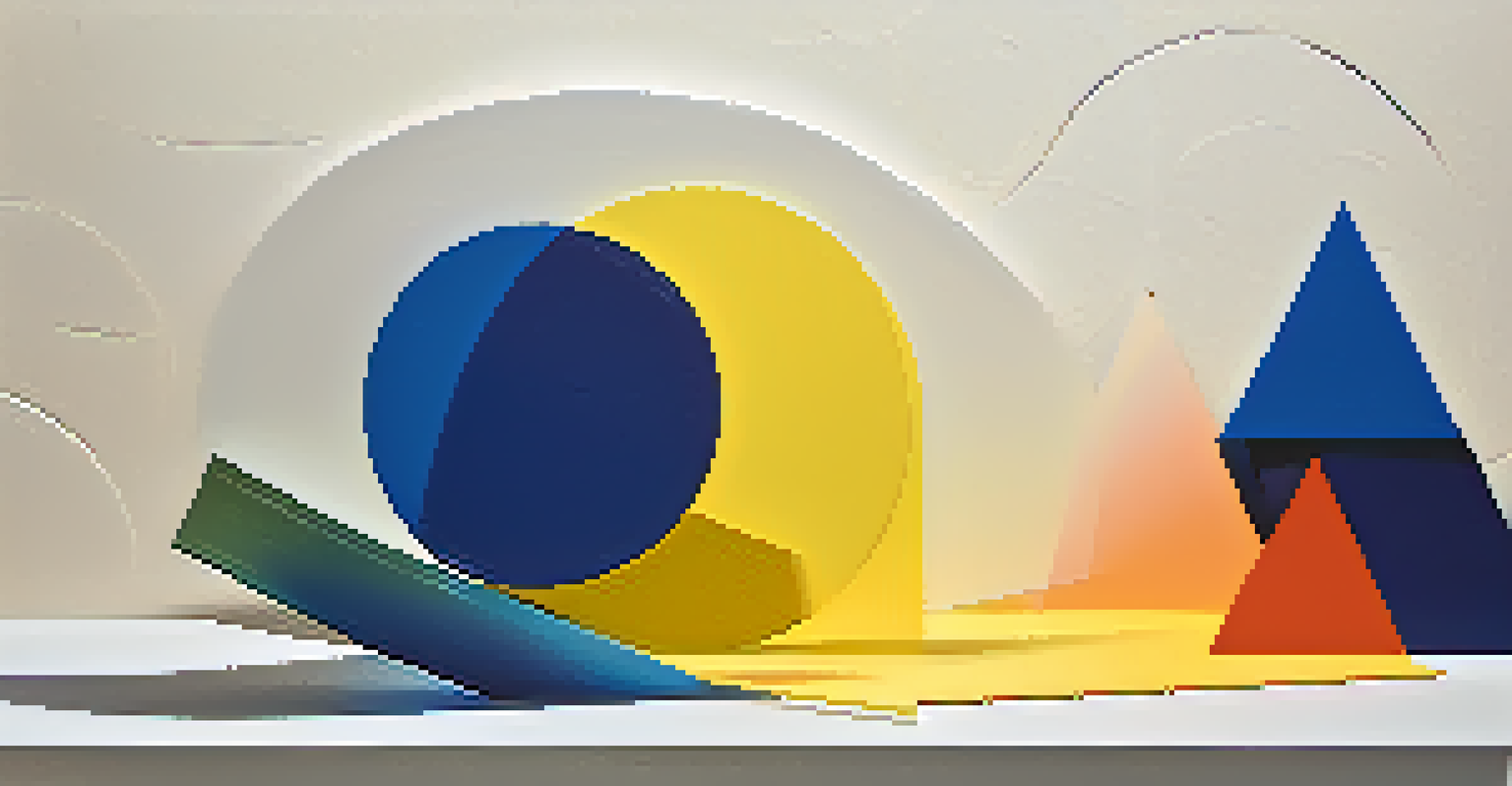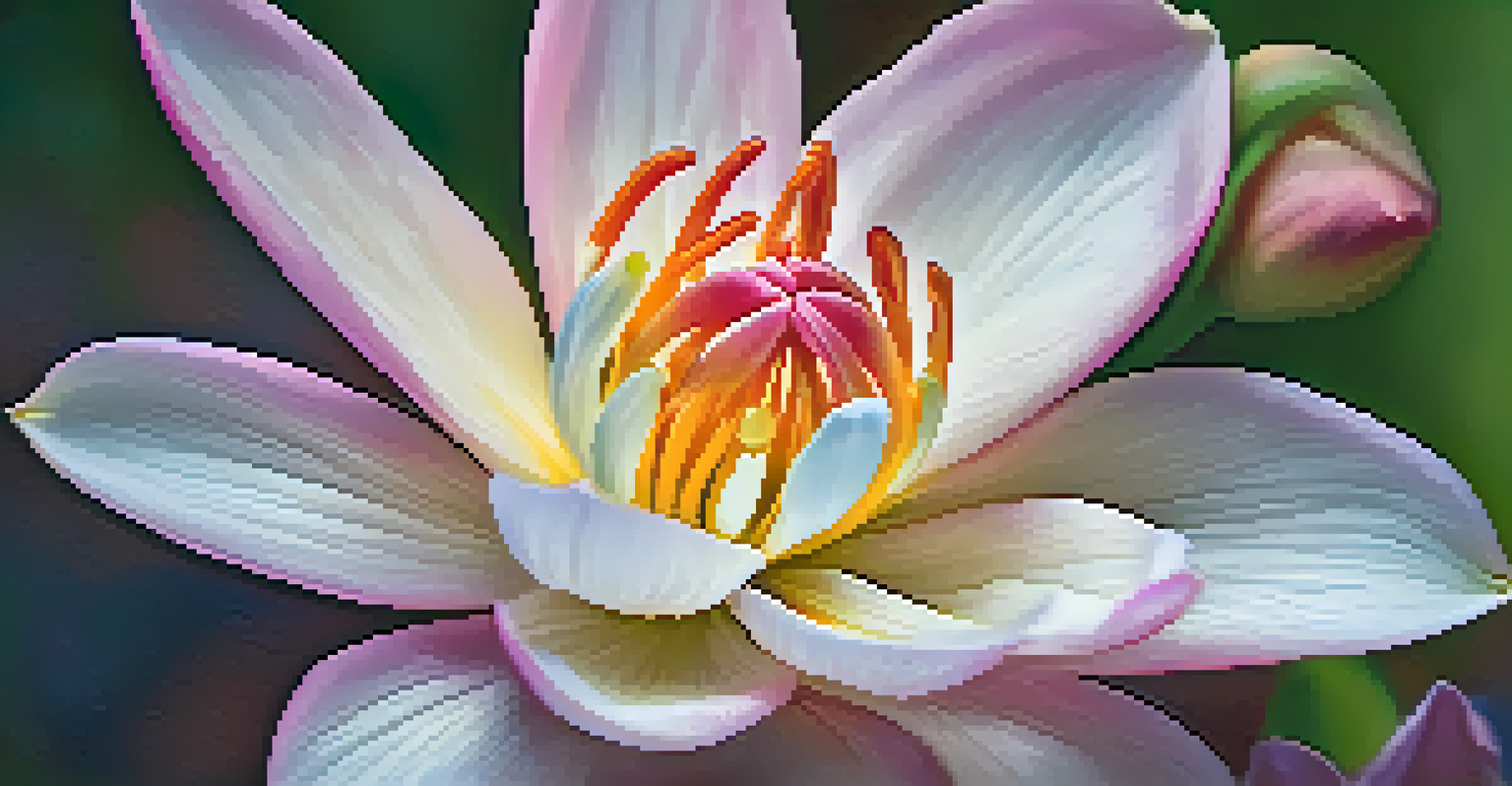Understanding Composition: The Backbone of Art Analysis

What is Composition in Art and Why It Matters
Composition in art refers to the arrangement of visual elements within a piece. It serves as the foundation for how viewers interpret and engage with artwork. Understanding composition helps to appreciate the artist's intention and the emotional response they aim to evoke.
Composition is the backbone of art analysis, providing a framework to explore not just what is presented but how it is presented.
When we think of composition, we can liken it to the structure of a well-crafted story. Just as a narrative has a beginning, middle, and end, a painting or sculpture has focal points, balance, and movement that guide the viewer's eye.
In essence, composition is the backbone of art analysis, providing a framework to explore not just what is presented but how it is presented. This understanding is crucial for both artists and art lovers alike.
Key Elements of Composition: Line, Shape, and Space
Lines are an essential element of composition, directing the viewer's gaze and creating movement within the piece. For example, diagonal lines can convey action and excitement, while horizontal lines often evoke calm and stability.

Shapes, whether organic or geometric, contribute to the overall balance of the artwork. An artist may use contrasting shapes to create tension or harmony, much like how different musical notes come together to form a melody.
Composition Shapes Viewer Experience
The arrangement of visual elements in art guides how viewers interpret and engage with the piece.
Space, or the area around and between objects, also plays a critical role in composition. Effective use of positive and negative space can enhance a piece’s depth and invite viewers to explore it more intricately.
The Role of Color and Texture in Composition
Color is a powerful tool in composition, capable of evoking emotions and setting the mood of an artwork. Think of how warm colors like red and yellow can create feelings of energy and warmth, while cool colors like blue and green often bring a sense of calm.
Art is not freedom from discipline, but disciplined freedom.
Texture adds another layer of depth, allowing the viewer to not only see but almost feel the artwork. An artist might use rough brush strokes to convey chaos or smooth surfaces to suggest tranquility.
Together, color and texture work harmoniously to create a rich visual experience, guiding the viewer’s emotional journey through the piece and enhancing overall composition.
Balance: Achieving Harmony in Art Composition
Balance in composition refers to how visual weight is distributed across a piece. It can be symmetrical, where elements are evenly distributed, or asymmetrical, where balance is achieved through contrasting elements.
For example, a symmetrical composition might remind us of a perfectly balanced scale, providing a sense of order. In contrast, asymmetrical balance can create dynamic tension, much like a seesaw where one side is heavier but still stable.
Balance Creates Harmony in Art
Achieving balance, whether symmetrical or asymmetrical, influences the viewer's interaction and emotional response to the artwork.
Understanding balance is crucial for artists, as it influences how viewers interact with the piece and whether they feel a sense of harmony or discord.
Focal Point: Drawing Attention in Composition
Every artwork has a focal point, the area that draws the viewer's attention first. This can be achieved through various techniques, such as contrast, color, or placement within the composition.
Think of it like a spotlight on a stage; the audience's eyes are naturally drawn to the performer in the light, just as they are to the most prominent element in a painting or photograph.
Establishing a clear focal point is essential, as it guides the viewer’s journey through the artwork, allowing them to explore the surrounding elements in relation to the main subject.
Movement: Guiding the Eye Through Composition
Movement in art composition refers to how the viewer's eye travels through the piece. Artists employ various techniques, such as lines and shapes, to create pathways that lead the viewer's gaze.
Imagine a river flowing through a landscape; just as the water guides the journey, movement in art directs attention and creates a visual narrative. This can enhance the story behind the artwork and keep viewers engaged.
Focal Points Draw Viewer Attention
A clear focal point in artwork directs the viewer's gaze, enhancing their journey through the surrounding elements.
By understanding how movement works within composition, artists can craft pieces that not only capture attention but also sustain it, creating a more immersive experience.
The Importance of Composition in Art Critique
Composition plays a pivotal role in art critique, as it provides a structured framework for analysis. When critiquing an artwork, recognizing the elements of composition can lead to deeper insights and discussions.
For instance, discussing how balance and focal points interact can reveal the artist's intentions and the emotional impact of the piece. This analytical approach enhances appreciation and understanding of art.

Ultimately, mastering composition is essential for both artists and critics, as it fosters a richer dialogue about the artwork and its significance within the broader context of art history.